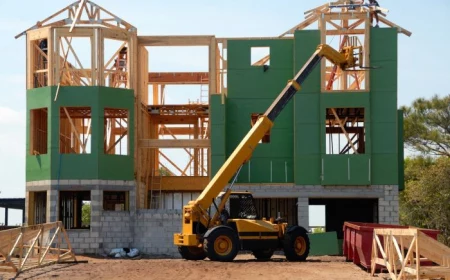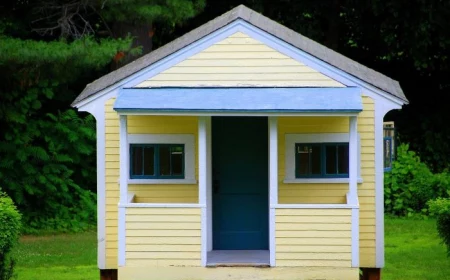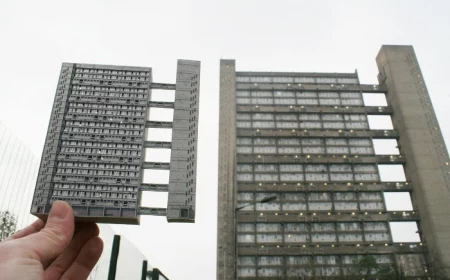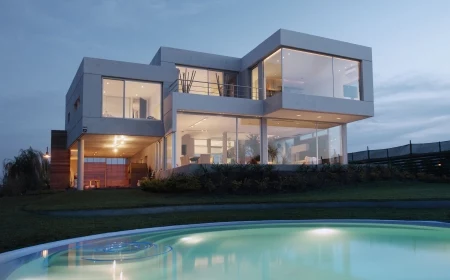More Than Just a Blueprint: How to Win the Projects You Actually Want
I still remember the sting of it. Freshly licensed, I had all this technical know-how from school and my internship years. I could detail a wall section in my sleep and navigate the maze of building codes. But actually convincing a potential client to hire me? I was clueless. I figured my portfolio would do all the talking. Spoiler alert: it didn’t.
In this article
I lost a few really promising projects early on, and it taught me a lesson that school never could. They teach you how to be an architect, but not how to build a business. And the real secret to landing a commission isn’t about being a slick salesperson. It’s about earning genuine trust.
If you’re a younger architect, I bet you feel overwhelmed. You’re up against bigger firms with massive marketing budgets, and there’s always that pressure to slash your fees just to get a foot in the door. But this isn’t about sales tricks. It’s about the real-deal professional techniques we use to build client relationships that lead to amazing, successful projects. Let’s walk through everything from that first coffee meeting to signing the contract, so you can show clients your value so clearly that hiring you is the easiest decision they’ll make.
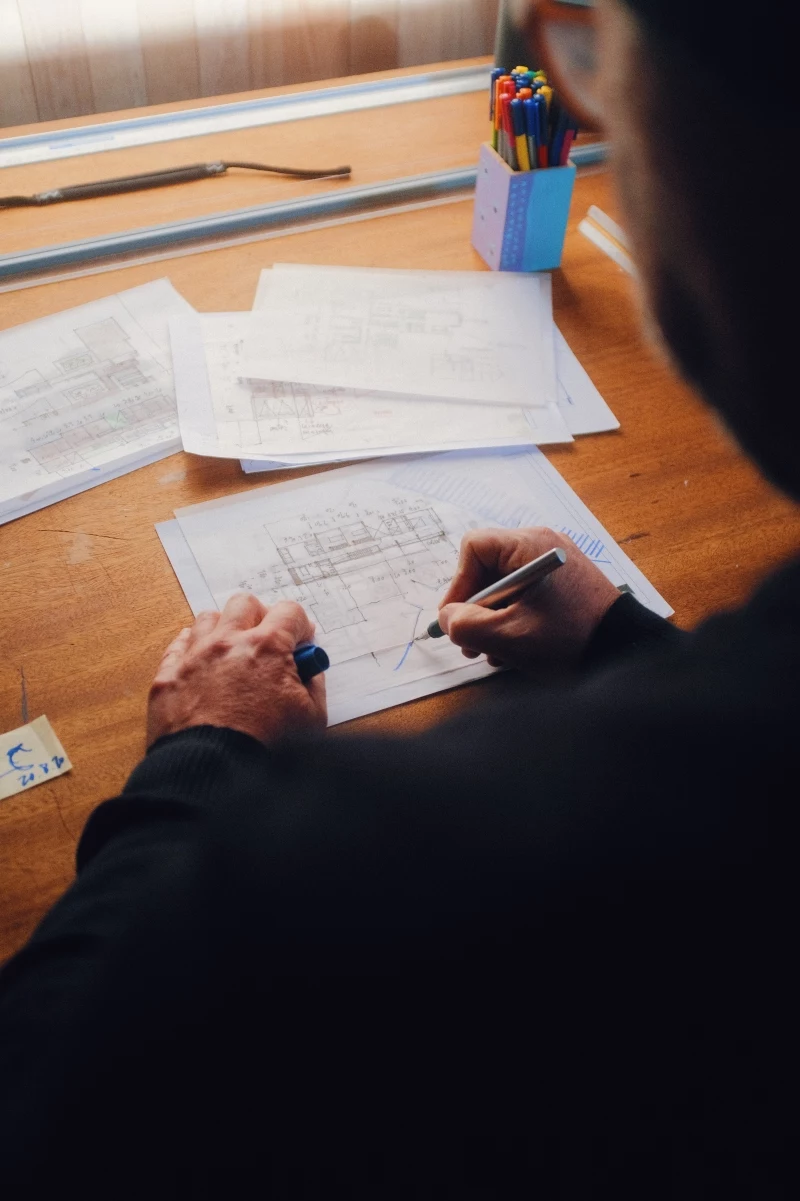
First Things First: It’s a Consultation, Not a Pitch
Let’s be honest, clients are usually a bundle of nerves when they first approach an architect. They’re about to make a massive financial investment, and especially on a home, a deeply personal one. Their biggest fear? That they won’t be heard. They’re terrified of an architect steamrolling them with a personal vision that has nothing to do with their life.
Your number one job is to put that fear to rest. That initial meeting is not a presentation. It’s a consultation. You’re like a doctor trying to understand the symptoms before you even think about writing a prescription.
How to Run That First Meeting
When I first meet a client, I spend maybe 10% of the time talking about my past work. The other 90% is all about them. I dig in with questions to understand their life, their routines, and what drives them crazy about their current space. I ask things like:

- Can you walk me through your morning routine? Where are the bottlenecks that make you late?
- When you have friends over, where does everyone end up gathering? Is it actually comfortable?
- What’s the one thing about your current home you wish you could magically change overnight?
- Have you ever worked with a designer or contractor before? And… how did that really go?
See how these questions go way deeper than just ‘How many bedrooms?’ They uncover the real, human problems that great design can solve. I listen way more than I talk, and I take a ton of notes. This shows the client I’m focused on them, not on my own ego. This is where trust starts to take root. You’re not just a vendor; you’re becoming their trusted advisor.
A Story I’ll Never Forget…
Early in my career, I met with a couple for a big home renovation. I brought my slickest portfolio and spent nearly an hour walking them through my best projects, talking up my design philosophy. They smiled and nodded, but I could feel this… distance. They ended up hiring another firm.
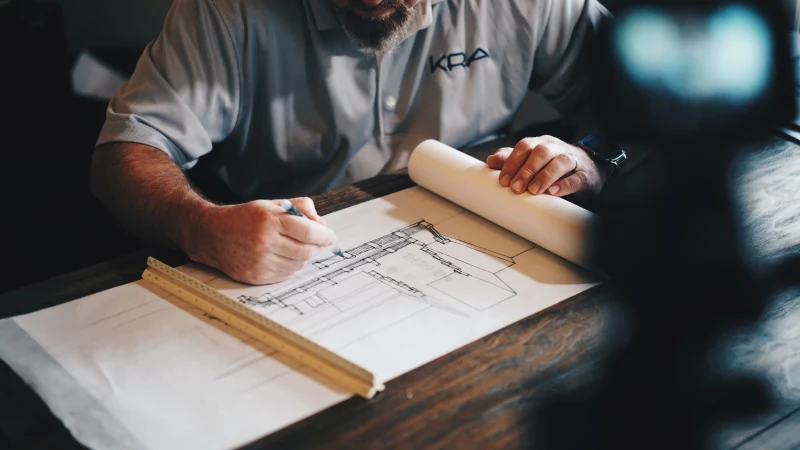
I found out later from a mutual friend that the other architect spent the entire meeting asking about their kids, their hobbies, and how they pictured their family living in the house ten years from now. I had sold them architecture. He helped them imagine a better life. Oof. I never made that mistake again. Your portfolio proves you have the skills. Your questions prove you can use those skills for them.
The Proposal: Your First Real Piece of Design Work
After that great first meeting, you send the proposal. So many architects treat this as a quick, one-page fee summary. What a missed opportunity! A professional proposal is your very first chance to show off your organizational skills and prove you truly understand the project. Think of it as a roadmap that shows the client you have a clear, step-by-step plan. It’s a piece of design in itself—it designs the entire working relationship.

The Anatomy of a Killer Proposal
Our proposals are never one-pagers. They’re typically 5-7 pages long and follow a clear, logical structure that’s based on industry standards. Using a familiar framework like this builds instant credibility.
A rock-solid proposal needs these key parts:
-
Project Understanding: Kick things off by summarizing the client’s goals in your own words. Restate their problems and dreams as you heard them. For instance, ‘Our design will focus on creating a light-filled, functional kitchen that connects seamlessly to the back garden, solving the current feeling of being cut off from the yard.’ This is PROOF you were listening.
-
Scope of Services: This is the most critical section. Get super specific about what your fee includes. We break our services down into the standard phases to help educate the client on the process. A heads-up: giving a rough timeline here is a game-changer. For a kitchen remodel, the Schematic Design phase might take 3-5 weeks, while the detailed Construction Documents could take another 4-6 weeks.
- Schematic Design: Exploring the big-picture concepts. This means floor plans and simple 3D views. We specify deliverables, like ‘two distinct design options to review.’
- Design Development: Refining the chosen path. We start picking out materials, fixtures, and finishes, and coordinate with a structural engineer.
- Construction Documents: Creating the highly detailed drawings (the blueprints!) that a contractor needs to build and get a permit.
- Bidding & Negotiation: We explain that we’ll help them get bids from qualified contractors and analyze them to find the right fit.
- Construction Administration: We outline our role during the actual build, including site visits, answering contractor questions, and reviewing payments. Be specific! For example, ‘fee includes bi-weekly site visits during active construction.’
-
Deliverables: List the concrete things the client gets at each milestone. ‘At the end of Schematic Design, you will receive PDF floor plans and two exterior 3D views.’ This manages expectations beautifully.
-
Fee Structure & Terms: Be transparent about the money. The most common ways to charge are a fixed fee, an hourly rate, or a percentage of the construction cost. I find clients really appreciate the certainty of a fixed fee for most residential projects. But you should explain the pros and cons of each:
- Fixed Fee: A set price for the agreed-upon scope of work. Pro for Client: Budget certainty. No surprises. Con for Architect: If the client is indecisive or the scope creeps, you can lose money. (This is why a super-detailed scope is essential!) For a full gut renovation, a fixed design fee could be anywhere from $25,000 to $80,000+, depending on the home’s size and complexity.
- Percentage of Construction Cost: Your fee is a percentage of the final build cost, often between 8% and 15%. Pro for Architect: If the project grows or gets more expensive, your fee adjusts accordingly. Con for Client: They might feel you have an incentive to design something more expensive. It requires a lot of trust.
- Hourly Rate: You bill for the hours you work, often with a cap (‘not to exceed X amount’). Pro: Best for projects with an undefined scope or for early feasibility studies. Con: Clients get nervous about open-ended bills. It’s often best for smaller consultations.
Also, clearly state your payment schedule. A common approach is a 25% retainer to start, with the rest billed as you complete each phase.
-
What’s NOT Included (Exclusions): Honestly, this might be the most important trust-building section. Be upfront about what your fee doesn’t cover. It prevents nasty surprises down the road. Common exclusions are things like permit application fees, engineering fees, and highly realistic 3D renderings (which can be an add-on service).
Good to know: Give them a heads-up on what those other costs might be! For example, tell them to budget between $1,500 and $3,000 for a property survey and that a structural engineer’s report for a renovation could run from $2,000 to $5,000. When you help them budget for the whole project, not just your piece, you become a hero.
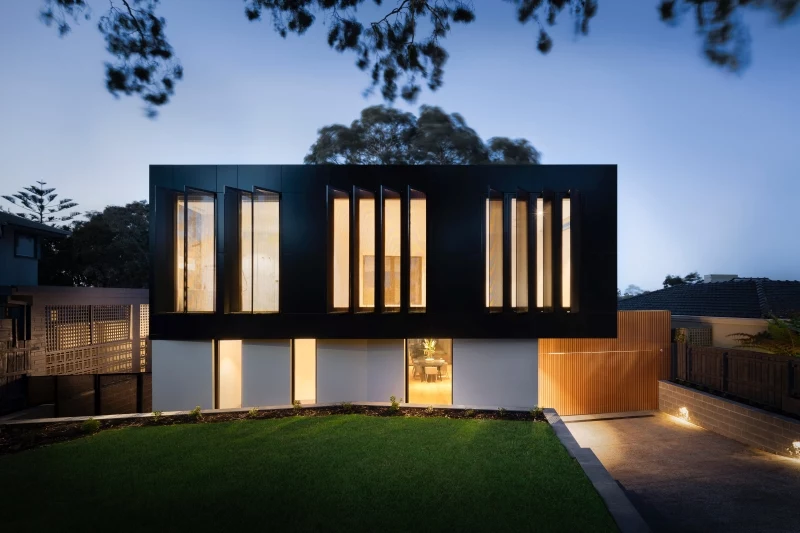
Yes, a detailed proposal takes time. But it’s an investment that pays off again and again. It prevents misunderstandings and protects both you and your client.
How to Compete When You’re Not a Giant Firm
You can’t out-market the big guys. But you can absolutely out-service them. Your size is your superpower. When a client hires a small firm, they get YOU. That direct line of communication and personal attention is a massive selling point. You just have to learn how to frame it.
Find Your Niche and Absolutely Own It
The most successful small firms don’t try to be everything to everyone. They specialize. A niche lets you build deep expertise that larger, more generalized firms just can’t touch. Your niche could be a project type, like sustainable homes or craft breweries. It could be a style, like historic preservation or minimalist modern.
When I first started, I took any job that came my way. I was spread thin and my marketing was generic. After a few years, I realized that my most profitable and fulfilling work was in complex home renovations. So I leaned in. I tailored my whole website and portfolio to speak directly to homeowners facing those exact challenges. Soon enough, contractors started referring me as ‘the person to call for tricky renovations.’ That’s the power of a niche.
Quick Tip: Not sure what your niche is? Try this. List your last five projects. Which one got you the most excited to get out of bed in the morning? Which one was the most profitable? The overlap between those two is where your niche is probably hiding.
Leverage Your Local Knowledge
Being an expert on your local area is a huge advantage. Every region has its own climate challenges, go-to building materials, and tricky zoning laws. Becoming the go-to expert on these is something a national firm with designers in a faraway office can’t replicate. Knowing how to design for coastal salt air or heavy mountain snow loads is invaluable.
Even better, building real relationships with the folks at the local planning and building departments is gold. When you can tell a client, ‘I’ve worked with the reviewer at the city before, and I know exactly what they’re looking for,’ you give them a massive sense of confidence. It shows you can navigate the bureaucracy and save them time and headaches.
Your Network is Your Secret Weapon
So many architects think their only path to new work is marketing directly to clients. The reality? A huge chunk of my best projects have come from my professional network. Your reputation among contractors and other designers is a quiet, powerful engine for growth.
Make Friends with Good Contractors
The relationship between an architect and builder shouldn’t be a battle. A great contractor is your partner in bringing a project to life. Seek out the best ones in your area. Treat them with respect. When you create clear, accurate, and buildable plans, they notice. They love working with architects who make their job easier.
And here’s the kicker: a respected contractor is often the very first person a homeowner calls. If they trust you, they will recommend you. That referral is more powerful than any ad you could ever buy.
The Tough Conversations: Money, Contracts, and Walking Away
The make-or-break moments often involve the conversations we dread. Talking about money, contracts, and limitations feels awkward. But avoiding them is a recipe for absolute disaster. Being a true professional means tackling these things head-on. It protects you, it protects the client, and it sets the stage for a great project.
Your Contract: Your Shield and Your Guide
I’m going to say this in all caps: NEVER WORK WITHOUT A SIGNED CONTRACT. A handshake deal isn’t a business practice; it’s a gamble. A solid contract isn’t an act of distrust—it’s an act of professional clarity. I strongly recommend starting with standard industry contracts from professional organizations. They’ve been tested and refined over the years and cover everything from who owns the drawings to how to handle disputes. Using one shows you’re a serious professional.
Recognizing Red Flags (and When to Run)
Not every project is a good project. Learning to spot a problem client is one of the most valuable skills you will ever develop. A bad project will drain your time, your money, and your soul.
Here are some red flags I’ve learned to watch for, and what you can say:
- The Unrealistic Budget: They want a palace on a shoestring budget. Or they need full plans for a major addition ‘in a couple of weeks.’
What to say: “I appreciate you sharing your budget. Based on current local building costs and the scope you’ve described, I think we’d need to either explore a phased approach or simplify the design to meet that number. Let’s talk about what’s most important to you.” - The Fee Haggler: A client who constantly nitpicks your fee is signaling a lack of respect for your work.
What to say: “I understand that the budget is a top priority. My fee reflects the time and level of detail required to do this project right. I am firm on my fee, but I’m happy to discuss ways we could adjust the project’s scope to better align with your budget.” - Asking for Free Work: The classic ‘Can you just do a few quick sketches for us?’ before signing anything. BIG warning sign.
What to say: “I’d be excited to explore some design ideas with you! That’s exactly what our first phase, Schematic Design, is for. Once we have our agreement signed, we can dive right into sketching.” - Badmouthing Everyone: If they trash every single designer or contractor they’ve ever worked with… guess who’s next on their list?
What to do: Listen to your gut and politely decline. You can say, “After reviewing the project, I don’t think my firm is the right fit for your needs at this time. I wish you the best of luck in finding the right partner.”
Trust me, the short-term pain of turning down a bad project is nothing compared to the long-term agony of working on one. Saying ‘no’ gives you the time and energy to find the great clients who will truly value what you do.
In the End, You’re Building Relationships, Not Just Buildings
Securing great architectural projects is a skill you build over a lifetime. It’s less about selling and more about being a great architect from the very first hello. It’s all rooted in listening, educating your client, and leading with calm professionalism. When you focus on building that trust, you attract clients who aren’t just looking for a set of drawings. They’re looking for a trusted partner to guide them on one of the most important journeys of their lives.


